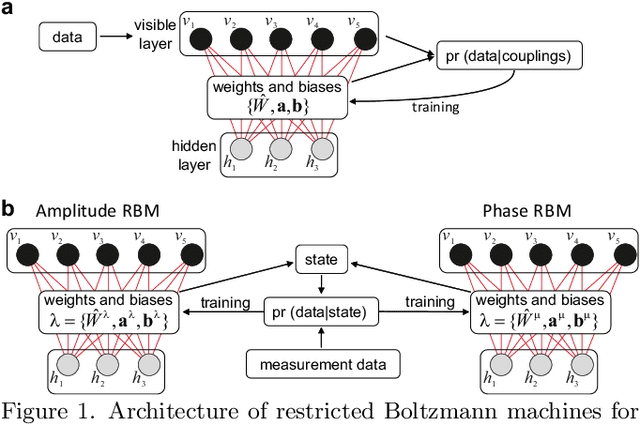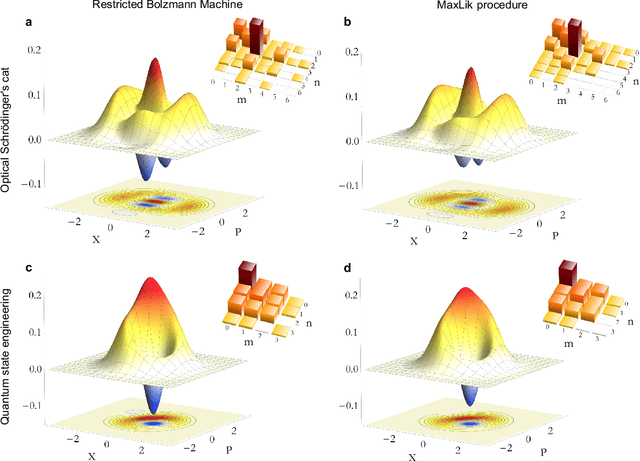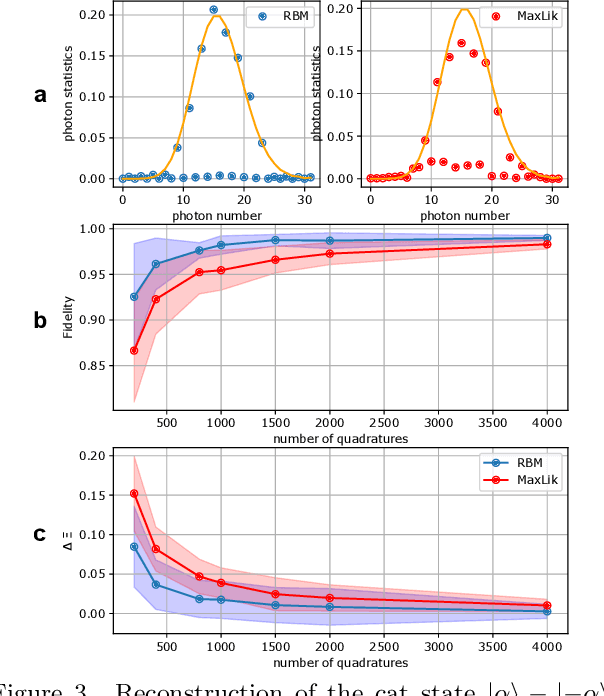A. K. Fedorov
Learning entanglement breakdown as a phase transition by confusion
Feb 01, 2022



Abstract:Quantum technologies require methods for preparing and manipulating entangled multiparticle states. However, the problem of determining whether a given quantum state is entangled or separable is known to be an NP-hard problem in general, and even the task of detecting entanglement breakdown for a given class of quantum states is difficult. In this work, we develop an approach for revealing entanglement breakdown using a machine learning technique, which is known as 'learning by confusion'. We consider a family of quantum states, which is parameterized such that there is a single critical value dividing states within this family on separate and entangled. We demonstrate the 'learning by confusion' scheme allows determining the critical value. Specifically, we study the performance of the method for the two-qubit, two-qutrit, and two-ququart entangled state, where the standard entanglement measures do not work efficiently. In addition, we investigate the properties of the local depolarization and the generalized amplitude damping channel in the framework of the confusion scheme. Within our approach and setting the parameterization of special trajectories to construct W shapes, we obtain an entanglement-breakdown 'phase diagram' of a quantum channel, which indicates regions of entangled (separable) states and the entanglement-breakdown region. Then we extend the way of using the 'learning by confusion' scheme for recognizing whether an arbitrary given state is entangled or separable. We show that the developed method provides correct answers for a variety of states, including entangled states with positive partial transpose (PPT). We also present a more practical version of the method, which is suitable for studying entanglement breakdown in noisy intermediate-scale quantum (NISQ) devices. We demonstrate its performance using an available cloud-based IBM quantum processor.
Training a discrete variational autoencoder for generative chemistry and drug design on a quantum annealer
Aug 26, 2021



Abstract:Deep generative chemistry models emerge as powerful tools to expedite drug discovery. However, the immense size and complexity of the structural space of all possible drug-like molecules pose significant obstacles, which could be overcome with hybrid architectures combining quantum computers with deep classical networks. We built a compact discrete variational autoencoder (DVAE) with a Restricted Boltzmann Machine (RBM) of reduced size in its latent layer. The size of the proposed model was small enough to fit on a state-of-the-art D-Wave quantum annealer and allowed training on a subset of the ChEMBL dataset of biologically active compounds. Finally, we generated $4290$ novel chemical structures with medicinal chemistry and synthetic accessibility properties in the ranges typical for molecules from ChEMBL. The experimental results point towards the feasibility of using already existing quantum annealing devices for drug discovery problems, which opens the way to building quantum generative models for practically relevant applications.
Experimental quantum homodyne tomography via machine learning
Aug 01, 2019


Abstract:Complete characterization of states and processes that occur within quantum devices is crucial for understanding and testing their potential to outperform classical technologies for communications and computing. However, solving this task with current state-of-the-art techniques becomes unwieldy for large and complex quantum systems. Here we realize and experimentally demonstrate a method for complete characterization of a quantum harmonic oscillator based on an artificial neural network known as the restricted Boltzmann machine. We apply the method to optical homodyne tomography and show it to allow full estimation of quantum states based on a smaller amount of experimental data compared to state-of-the-art methods. We link this advantage to reduced overfitting. Although our experiment is in the optical domain, our method provides a way of exploring quantum resources in a broad class of large-scale physical systems, such as superconducting circuits, atomic and molecular ensembles, and optomechanical systems.
Revealing quantum chaos with machine learning
Feb 25, 2019



Abstract:Understanding the properties of quantum matter is an outstanding challenge in science. In this work, we demonstrate how machine learning methods can be successfully applied for the classification of various regimes in single-particle and many-body systems. We realize neural network algorithms that perform a classification between regular and chaotic behavior in quantum billiard models with remarkably high accuracy. By taking this method further, we show that machine learning techniques allow to pin down the transition from integrability to many-body quantum chaos in Heisenberg XXZ spin chains. Our results pave the way for exploring the power of machine learning tools for revealing exotic phenomena in complex quantum many-body systems.
 Add to Chrome
Add to Chrome Add to Firefox
Add to Firefox Add to Edge
Add to Edge